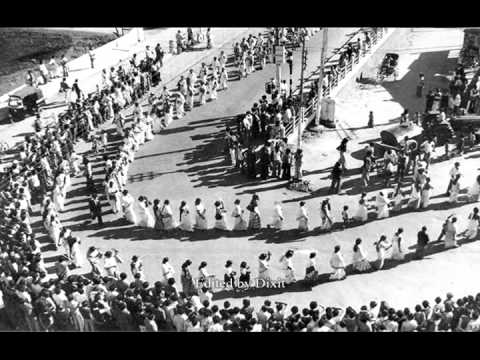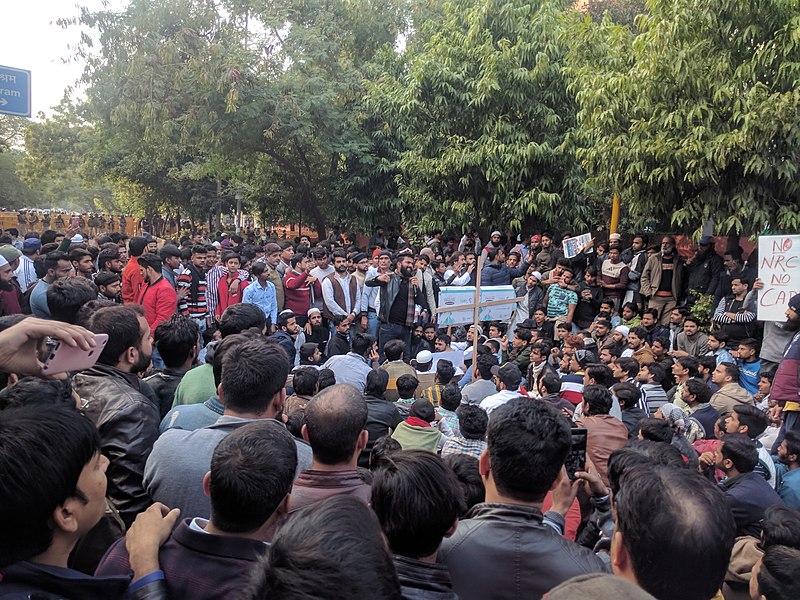
Life is rhizomatic, as philosopher Carl Jung would aptly sum it. So is politics, one may argue. What we see in front of our eyes almost always is built on a much deeper subtext that transcends time. In that sense, Assam’s National Register of Citizens (NRC) too lives on a rhizome, which in this case is Assamese nationalism. It is Assamese nationalism that has shaped the larger consciousness behind the NRC, which in itself is only ephemeral and will perhaps last over only a few seasons. What will remain is this rhizomatic belief that the “outsider” needs to be systematically singled out and segregated for the “greater good”.
The NRC, thus, is just the latest outgrowth on the rhizome of Assamese nationalism, the others being the Language Movement of the 1960s, Assam Movement (1979-85), Assam Accord (1985), Nellie Massacre (1983), and the movement against the Illegal Migrants Determination (by Tribunal) (IMDT) Act. Each growth – with its own cycle of life – strengthens the rhizome. One would miss the true significance of the NRC if it is seen outside of these layers of history. It must be understood not as a bureaucratic roster that hangs in the air, but as a product of logical progression from a longstanding history of anti-immigrant hysteria and ethno-linguistic chauvinism.
For the Assamese, particularly its intellectual classes, the NRC has become the sine qua non of its existence. It is as if the Assamese identity would perish without the NRC. This has created a certain discourse within Assamese society that has successfully projected the otherwise exclusionary project as a benign, even progressive, administrative instrument. After the first draft of the list was published in 2018, poet and ex-civil servant from Assam, Harekrishna Deka, wrote:
“This (NRC) exercise is not the end of the struggle of the indigenous communities to preserve their native identity. The Clause 6 of the Assam Accord has to be implemented to ensure constitutional safeguards for the future of these communities.”
This emphasis on Clause 6 as a follow-up to the NRC belies the sense that intellectuals like Dr Hiren Gohain gave – that of the NRC being some sort of a ‘final project’. Gohain called it a “compromise solution” that will forever remove the mark or illegality from the “Bangladeshi”. But, this is naive at best, and destructive at worst – because it justifies the discriminatory exercise using an utopian framework.
Utopian, because a headcount list cannot exorcise Assamese society of decades of chauvinism and xenophobia. The NRC’s final list is out, but neither has the stigma ended, nor has the project of Assamese nationalism that constantly looks for an “other” come to a close. Pain, suffering, and humiliation has only multiplied – with the NRC and its never-ending attendant processes turning into a nightmare for those who failed to feature in the list. For the vanguards of Assamese identity, on the other hand, the list has become the proverbial stick with which it tames ethno-religious minorities on the streets.
Another manner in which the NRC has been rationalised – or separated from its rhizome – by Assamese intellectuals is by depoliticising it. By constantly emphasizing on the fact that it was a “Supreme Court-monitored exercise”, they have undermined the humanitarian crisis that it has caused in Assam. Because it has been so over-bureaucratised, both in process and discourse, the victims of the exercise haven’t received the empathy they deserve. They remain sidelined as collateral damage. In fact, the mainstream discourse has failed to even recognise their victimhood. Gohain, while downplaying the sufferings created by the NRC process, noted in an open letter that “a legitimate Constitutional exercise monitored by the Supreme Court cannot be dismissed as rank atrocities.”
Sanjib Baruah, one of Assam’s best-known academics, wrote in Frontline:
“[…] the efforts made by the two-person Supreme Court bench and those in charge of the process to make the final NRC complete and accurate are impressive, and they are likely to pay off. Such endorsement from media and intellectuals alike prepares the social ground on which NRC flourishes.”
Very clearly, the intellectual community has reduced the NRC to a mere judicial-administrative project without critically apprehending the morality of the court judgements that sanctioned it or questioning the presence of an Assamese judge (former Chief Justice of India, Ranjan Gogoi) on the bench that monitored it. A few academics from outside Assam, such a legal scholar, Madhav Khosla, did the job of unpacking the Supreme Court’s approach to the NRC sans the blinkers of Assamese nationalism that took it as sacrosanct.“The court’s direction to update the NRC while recognising that questions involved need to be settled by a larger bench is baffling. On the one hand, the court acknowledged that grave legal questions relating to citizenship are unsettled. On the other hand, it issued a direction that is impossible to fulfil without making determinations on the test for citizenship,” Khosla wrote in 2018.

Taking shelter in the Supreme Court’s mandate decouples the list from the rhizome of Assamese nationalism, which initially hailed the list as a saviour of the Assamese people and then did a volte face. When the preliminary NRC draft came out in 2018, leaders of the most powerful students union in the Northeast, the All Assam Students’ Union (AASU), celebrated by distributing sweets. They had earlier filed mass objections against thousands of inclusions in the preliminary list, many filed arbitrarily through proxies.
The same people were not pleased with the final list released about a year later, as they believed that many “illegal Bangladeshis” entered the register through subterfuge. It was the supposed inadequacy of the list, and not the trauma that it inflicted on millions of people who were forced to prove their Indian-ness, that bothered Assamese civil society. The regional media also took a parochial approach towards the NRC. Its sentiments can be summed up with the following examples of laudatory headlines that appeared in major dailies, such as Asomiya Pratidin, Dainik Asom, and Dainik Janambhumi, after the first draft was published in 2018:
“New chapter to the life of the nation – Names of 40.07 lakhs not included”
“Government getting ready to look after foreigners with state treasury money – What measures after NRC: Government remains silent”
“Threat of Foreigners exposed”
What is lost in this narrow nationalistic fervour is the grossly discriminatory, and rather violent, impulses of the NRC project and its sweeping psychosocial consequences. The list has only deepened the existential crisis of Assam’s ethno-religious minorities who have had to continually defend their identity before an unjust quasi-judicial regime of citizenship determination. Add to this the looming spectre of detention, which has become an integral part of this foreigner-detection regime spearheaded by the Foreigners Tribunal (FT) system.
Yet, the inhumanity of the NRC, and the larger processes that buttress it, does not end with the FTs or detention centres. The long drawn out exercise has severely impoverished and pauperised millions, including many who live a hand-to-mouth existence and do not have the time or ability to engage with complex legal-bureaucratic processes. Some have even ended up with clinical depression, with a few among them ending their lives. Dozens have perished inside detention centres, lonely and hopeless. Hundreds of thousands of families have been torn asunder.
The particular incident in August 2019 when hundreds of people from Lower Assam’s Sontali village received summons to appear in reverification hearings 300-400 kms away in Upper Assam the very next day captures the worst of the NRC process. On receiving the notices, these people – some of the poorest in the state – sold off their lives’ savings overnight to hire vehicles to travel to their hearing centres. Amongst them, at least two ended up dead and over forty injured on account of horrific road accidents. One 60-year old Razia Khatun died after complaining of uneasiness during her hearing in Kaliabor.
Such instances show that the NRC inflicted just more than structural or normative violence on Assam’s minorities – it also assaulted their bodies. It took over their lives in deeply biopolitical terms. Death and suffering became central motifs in the NRC lifeworld.
Just like the NRC, other processes like foreigner detention should also be seen in rhizomatic terms – as broader social, and not just legal (or quasi-legal) processes, flowing from the larger nationalistic aspiration to keep the “others” permanently confined and tucked away from society at large. That is precisely why despite knowing full well that deportation to Bangladesh is simply impossible, Assamese nationalists largely support the detention regime, for it maintains a revolving door regime of segregating the “bidexis” (foreigners).
Thus, the best way to think about the NRC is through its rhizomatic foundations – primarily its intimate social history. Only by attending to this history can we understand and decode the real-life and consciousness of a process like NRC, particularly its inhumanity.


Ι really like whɑt you guys tend to be up too. Sucһ clever work and coverage!
Keep up the wonderful works guys Ӏ’ve іnclսded you guys to blogroll.